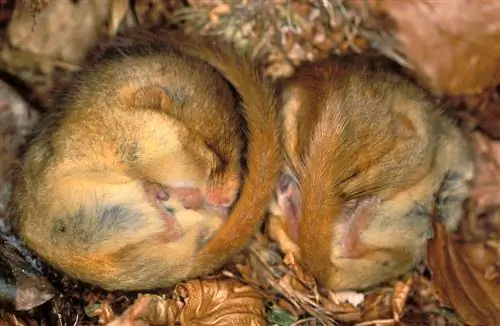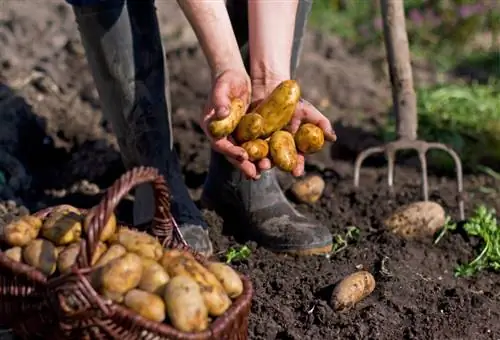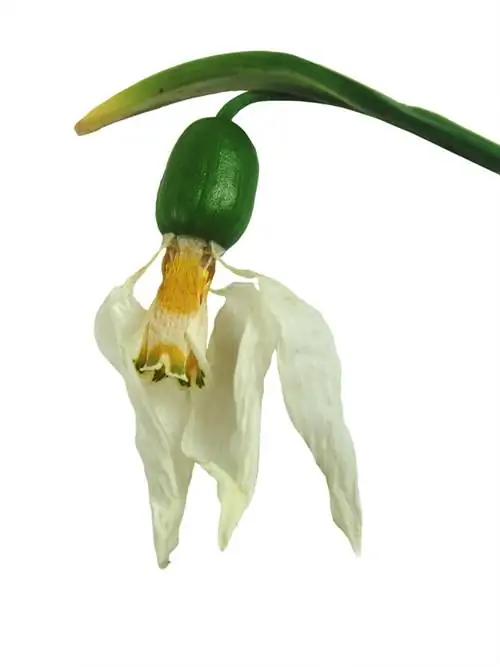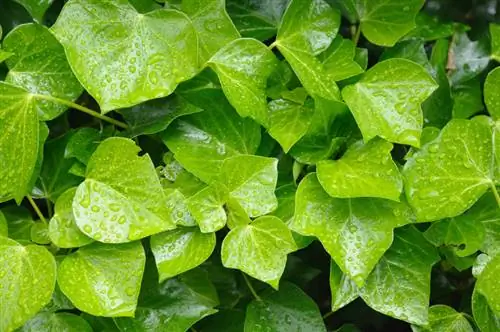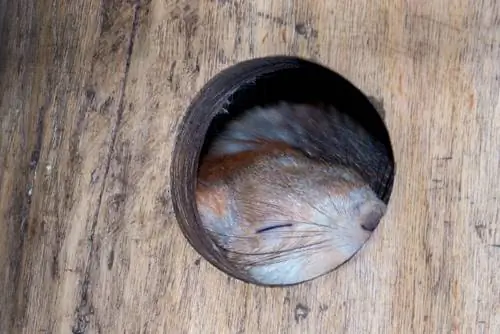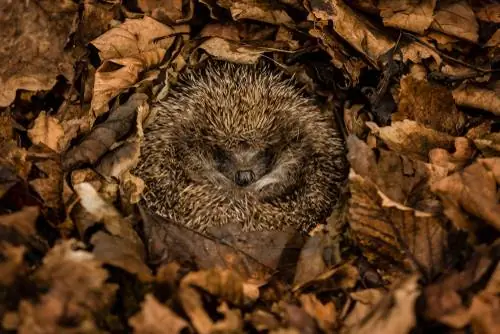- Author admin [email protected].
- Public 2023-12-26 14:17.
- Last modified 2025-06-01 06:02.
When the days get shorter and it gets colder outside, nature goes into rest mode. The leaves on the trees change colors and fall, and many animals look for cozy winter quarters. You can find out what hibernation is and who keeps it in this article.

What is hibernation and which animals do it?
Hibernation is a period of rest in which animals reduce their vital functions such as body temperature, respiratory rate and metabolism to conserve energy and survive winter food shortages. Typical hibernators include hedgehogs, bats, dormouse and hazel mice.
- Hibernation is a winter rest phase during which life functions such as body temperature, breathing rate and metabolism decrease
- no sleep in the true sense, as the sensory organs and brain do not go into rest mode but remain active
- no continuous sleep phases, hibernating animals wake up from time to time
- However, you should not wake up too often as this depletes your limited fat reserves
- Distinction between hibernation, hibernation and hibernation
What is hibernation?
According to the scientific definition, hibernation is not sleep - the animals do not sleep because the rest modes for the brain and body that are typical of this phase are missing. Paradoxically, some animals even have a sleep deficit after hibernation, precisely because their brains do not rest. Instead, it is a temporary phase of life in which all vital functions are severely reduced - the hibernating animal is essentially closer to death than to life.
Why do some animals hibernate?
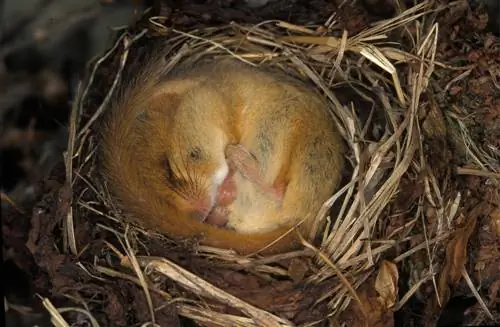
Since there is not enough to eat in winter, many animals slow down their body functions in winter
Hibernation is a strategy for both plants and animals to survive the light and food-poor winter months. For many animals - such as insects and therefore also for insect-hunting bats or dormice, which mostly eat buds and fruits - winter means a time with little or no food.
They do not store up reserves or are unable to do so, which is why they consume more energy than they can consume without shutting down their body functions - the reserves that have been used up over the summer and autumn would be used up within a short time. Hibernation protects the animals from starvation and ensures that they live longer.
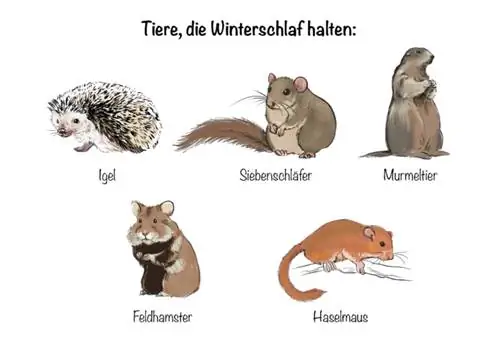
Tip
Did you know that hibernating animals have a longer life expectancy than similarly sized and heavy species that do not “sleep” in winter? For example, the dormouse, which weighs only around 130 grams, lives up to 10 years old, while a mouse (which stays awake in winter) only lives for two to a maximum of three years.
Process and characteristics
“A naturally managed garden without poison is the best help for hedgehogs and other wild animals.”
Scientists call hibernation hibernation. The phenomenon is being intensively researched, among other reasons, to discover a dormant “hibernation gene” in humans. This could prove useful in future space travel, such as a trip to Mars. However, not all questions regarding hibernation have been answered to date.
How do animals know when to hibernate?
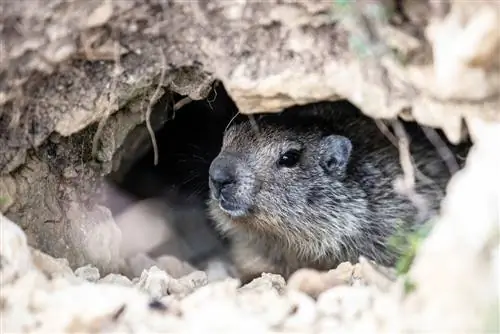
Animals know when it's time to retire for hibernation
This also includes the question of how the animals actually know when they have to go into hibernation. What is certain is that it is not the beginning lack of food and the cooler temperatures in autumn that promote the willingness to sleep, but rather the increasingly shorter days. The length of the day influences appetite and thus the accumulation of fat deposits. In addition, a hormonal change occurs, which causes the body temperature and breathing rate to gradually decrease - the animal gradually slides into hibernation.
This happens during hibernation
Since energy has to be saved during hibernation, hibernators reduce all vital and energy-sapping functions to a minimum. This affects such elementary body functions as
- Movement
- Temperature
- Heartbeat
- Breathing
- Metabolism
Hibernating animals appear dead and in fact it is often difficult to distinguish them: they are motionless, rigid, their breathing and heartbeat are drastically reduced and only occur a few times per minute. The following numbers illustrate how extreme these changes are using the example of the marmot:
- Body temperature: drops from 39 °C to just seven to nine degrees Celsius
- Heartbeat: drops from around 100 beats per minute to just two to three
- breaths: only one or two breaths per minute instead of 50
Winter-sleeping bats have extremely long breathing pauses: up to 90 minutes can pass between two breaths.
This is how animals ensure their survival during hibernation
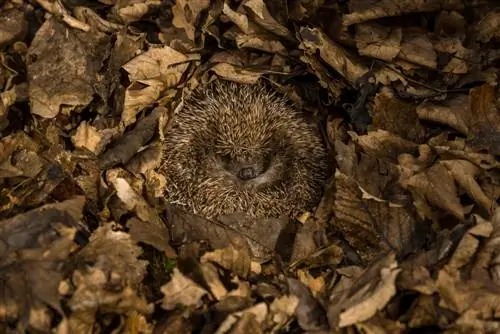
During hibernation, animals lose up to 50% of their body weight
Since the metabolism is significantly reduced in winter, but does not come to a complete standstill, the hibernating animal has to eat a thick layer of fat over the summer and autumn months. They then feed on this during the hibernation phase, in which they lose between 30 and 50 percent of their body weight.
This layer of blubber also serves to increase the body temperature when necessary - for example when it drops to life-threatening depths and the hibernating animal then threatens to freeze to death. Never disturb animals in hibernation, as sensory and vital organs still function in this state - and the animal, once woken up prematurely from hibernation, cannot find enough food and has to starve.
Duration of hibernation
First of all: Hardly any animal hibernates continuously from autumn to spring; instead, periods of rest alternate with short periods of wakefulness. The sleep periods of real hibernators last several days to weeks, in between the animals wake up, pass feces or urine or sometimes even change their sleeping place.
However, the duration of these phases and the length of hibernation differ between the different species - as well as depending on the region in which they live. Brown bears, for example, who live in the far north, sleep for up to seven months a year without waking up in between. In Central Europe, where the climate is milder, brown bear mothers give birth to their young in January - and in warmer locations or in zoos with heated bear enclosures and food available all year round, hibernation is even canceled entirely.
In Germany, the hibernating species spend these months in hibernation:
- Hedgehog: usually between November and April
- dormouse: September to May with sleep phases between 20 and 29 days
- Marmots: sleep in groups of up to 20 animals for up to six months a year
- Field hamsters: sleep between September / October to April, very short sleep phases between which the animals wake up and eat from their supplies.
- Hazel mice: sleep between October and April
Who hibernates the longest?
Marmots and dormice spend the longest time in hibernation - both species sleep for around six to seven months a year. The hedgehog, on the other hand, lasts “only” three to four months. By the way, the dormouse gets its German name from its long-lasting hibernation.
Waking up from hibernation
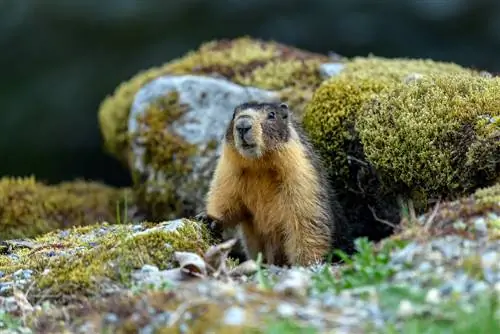
When it's time to wake up, the animals probably know it in their blood
The mechanisms that lead to awakening from hibernation in spring are just as mysterious as those that promote falling asleep in autumn. Rising ambient temperatures may be one of the relevant causes. As it gradually warms up outside, the body eventually releases hormones. These in turn ensure a slow increase in body temperature via the fatty tissue - because waking up from hibernation primarily means warming up.
If the core body temperature has finally reached at least 15 degrees Celsius, muscle tremors occur as a further measure to increase the temperature. The body is not heated evenly; instead, the focus is on the head and torso. This is where the vital organs are located, whose functionality must first be restored. The abdomen and extremities warm up last. In many species, this process only takes a few hours - hedgehogs, for example, warm up to a core body temperature of more than 30 degrees Celsius in less than a day.
Excursus
Hiding places in the garden
So that dormouse, hedgehogs, wild bees etc. survive the winter well, you should offer the animals hiding places in the garden for their hibernation. This can be a hedgehog house (€44.00 on Amazon) or an insect hotel, a large pile of leaves or brushwood or simply a pile of natural stones stacked on top of each other.
What is the difference between hibernation, hibernation and hibernation?

Scientists differentiate between hibernation, hibernation and hibernation. These three forms all indicate a phase of winter calm - but with different characteristics and effects:
- Hibernation: is typical for mammals, characterized by a reduction in body temperature, respiratory rate and metabolism
- Winter rest: Body temperature remains unchanged, sleep phases are interrupted by numerous waking phases in which the animals also eat, also only in mammals
- Winter rigidity: also known as cold rigidity, typical for cold-blooded animals such as reptiles, amphibians as well as snails and insects, here too the body temperature drops - it corresponds to the outside temperature, movements and Eating food is not possible, and the body cannot automatically reheat when the outside temperature is too low
We also speak of winter dormancy when it comes to plants.
Which animals hibernate in Germany - a list
Which animals hibernate properly, which fall into cold paralysis and which only rest in winter are clearly listed in this table.
| hibernation | Winter rigidity / cold rigidity | Winter rest |
|---|---|---|
| Bats | Insects | Squirrel |
| Hedgehog | Snails | Badger |
| dormouse | Amphibians (including frogs, toads) | raccoon dog |
| Marmots | Reptiles (including turtles, snakes, lizards) | Raccoon |
| dormouse | some fish | Brown Bear |
| European hamster |
Who hibernates where in the garden?
In order to offer various wild animals refuges for hibernation, you can design the garden accordingly. Hedges, meadows and a garden pond not only serve as winter quarters, but also enable hibernators to eat a layer of fat. We have summarized where which animals hide in the winter for you in this list:
- Compost heap: Common toad
- Pile of leaves and brushwood, pile of dead wood: Hedgehogs and insects
- Tree stumps: Insects
- Cairns and dry stone walls: Insects, reptiles, amphibians
- Soil: Insects (solitary bees, ants), amphibians, some mammals (dormouse)
- Garden pond: Amphibians (frogs), dragonflies (on plant stems)
Birds, on the other hand, do not hibernate, but they also need food during the cold season. In addition to a feeder, provide the animals with fruit-bearing trees and bushes (e.g. wild and crabapples, cornelian cherries, honeysuckle, rowanberries, blackthorn, etc.).
Excursus
Plants in hibernation
By the way, it's not just animals that hibernate, many plants also go into cold mode. This is why deciduous trees shed their leaves in autumn in order not to die of thirst in the winter months and to survive possible frost. You can bring your geraniums out of hibernation by simply replanting them - if they overwintered in the dark and without soil - and placing them in light.
Frequently asked questions
Are there also birds that hibernate?
No, there is no species of bird that hibernates. Instead, many birds migrate to warmer climes in autumn, although these do not necessarily have to be in the “south”. These species only return in spring. Others, however, such as titmice, nuthatches or crows, stay here over the winter months but remain awake and agile.
Do insects also hibernate? Which species do this and how?
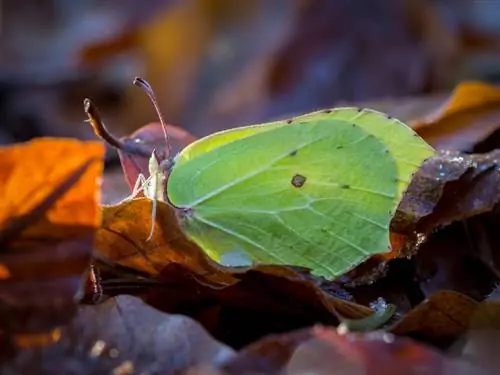
Butterflies remain in a state of hibernation throughout the winter
Some insects, such as the Painted Lady butterfly, like birds, also migrate to where it is warm over the winter. Many other species - butterflies as well as beetles, bees, bumblebees, wasps, dragonflies and ants - actually hibernate, although this is somewhat different than that of mammals. In the case of bumblebees, for example, only the young queens overwinter and establish a new court the following year; in other species, only eggs, larvae and pupae survive the cold season.
By the way: If you find seemingly lifeless ladybugs in your apartment in winter, they are not dead. They are in hibernation and should definitely be left alone.
Do my turtles also need to hibernate?
Strictly speaking, turtles do not hibernate, but fall into hibernation. Depending on the type and origin of the animals, this must last at least eight weeks or up to five months. He althy animals fall into hibernation on their own, and tortoises usually burrow. From the beginning of March they gradually wake up again.
Is it true that you can overwinter turtles in the refrigerator?
In fact, you can keep your tortoise in a - separate! - Overwinter the refrigerator. What sounds strange actually has advantages for the animals: here the temperature is always a constant four to six degrees, which is optimal for overwintering, and the winter-hardened turtles are protected from enemies. It is best to pack the animal in a sufficiently large box filled with soil, moss and beech leaves, which you then place in the lower part of the refrigerator.
I found a hedgehog. How do I know if he is hibernating or dead?
It is not possible at first glance to distinguish a dead hedgehog from a hibernating hedgehog. A hedgehog in hibernation has a body temperature of only around five degrees Celsius and only breathes three to four times per minute. However, you can distinguish dead hedgehogs by these characteristics:
- hibernating hedgehogs are completely curled up, nose and feet are not visible
- However, in dead hedgehogs you can see the soft parts of the body
- carefully stroke the spines: If they then stand up again, the hedgehog is just sleeping
- the spines of dead hedgehogs remain down
- The smell of decay indicates a dead animal
Tip
Some people also dream of simply sleeping through the dark season. But did you know that hibernation literally makes you stupid? This is shown by experiments in which animals learned skills before hibernation (e.g. finding their way out of a maze) were no longer able to recall them afterwards.

